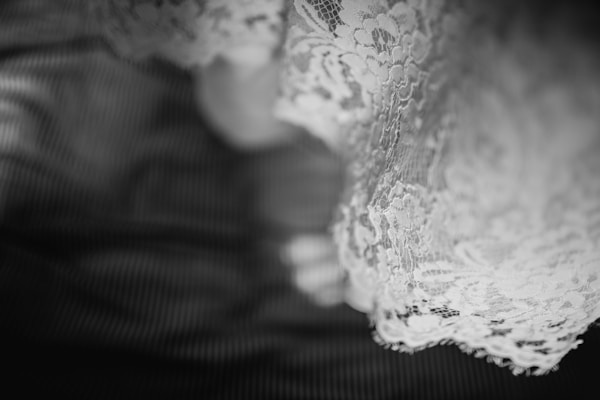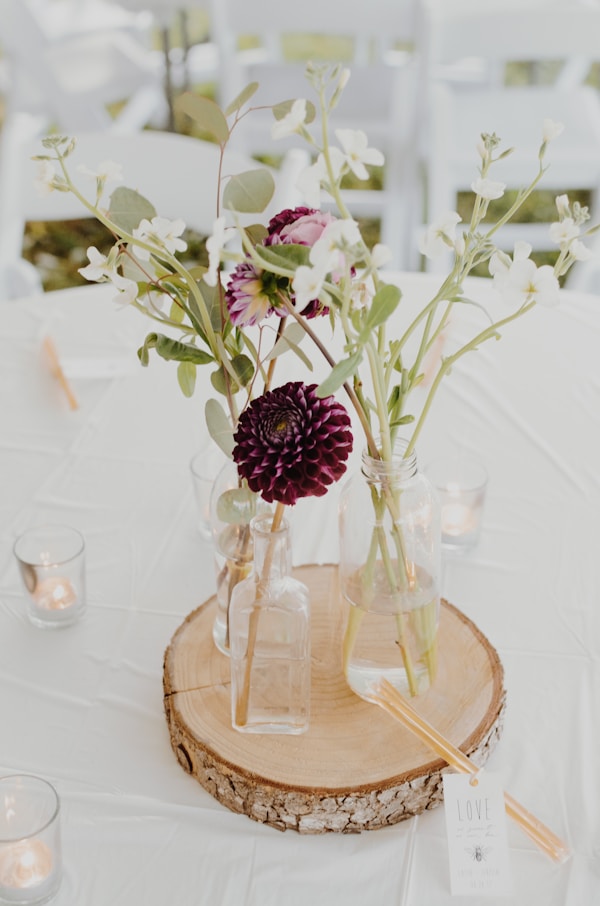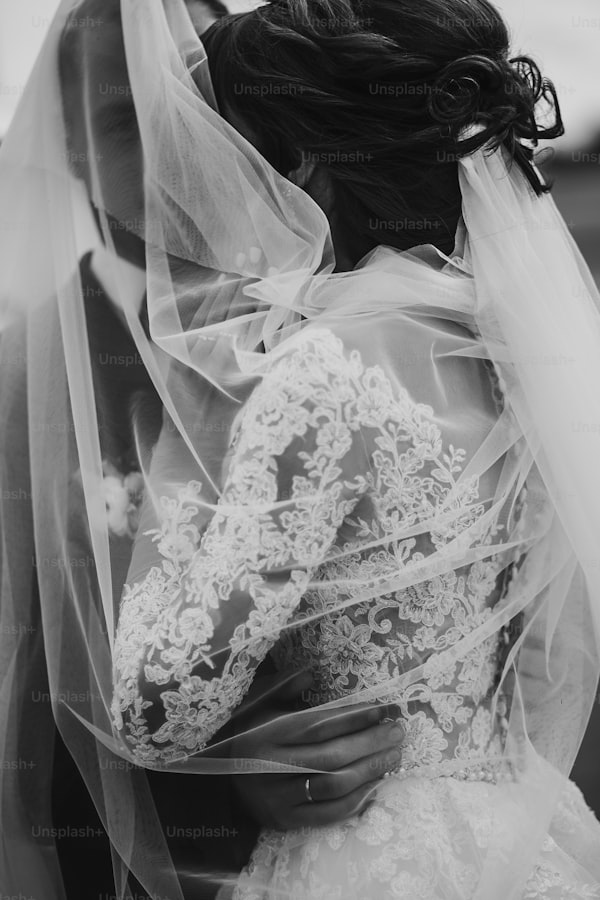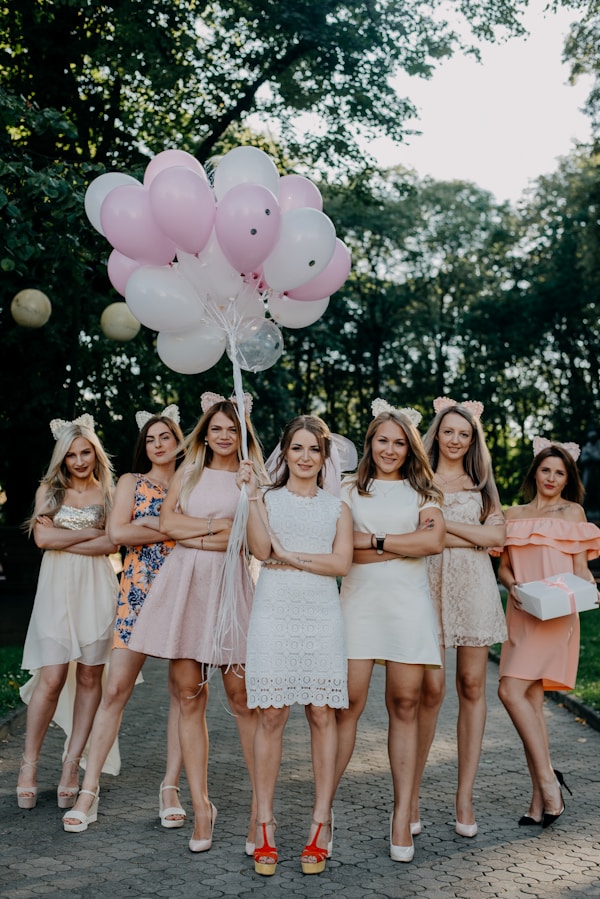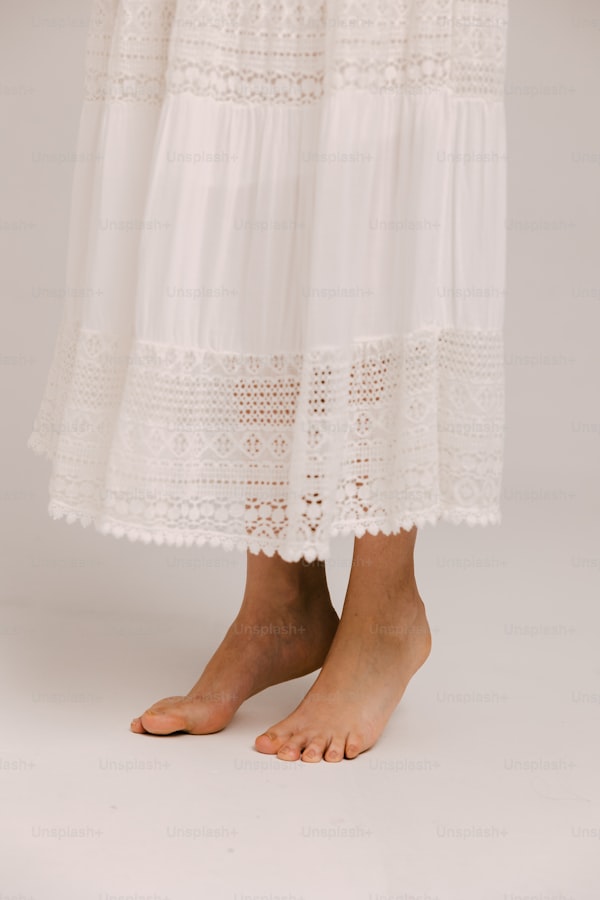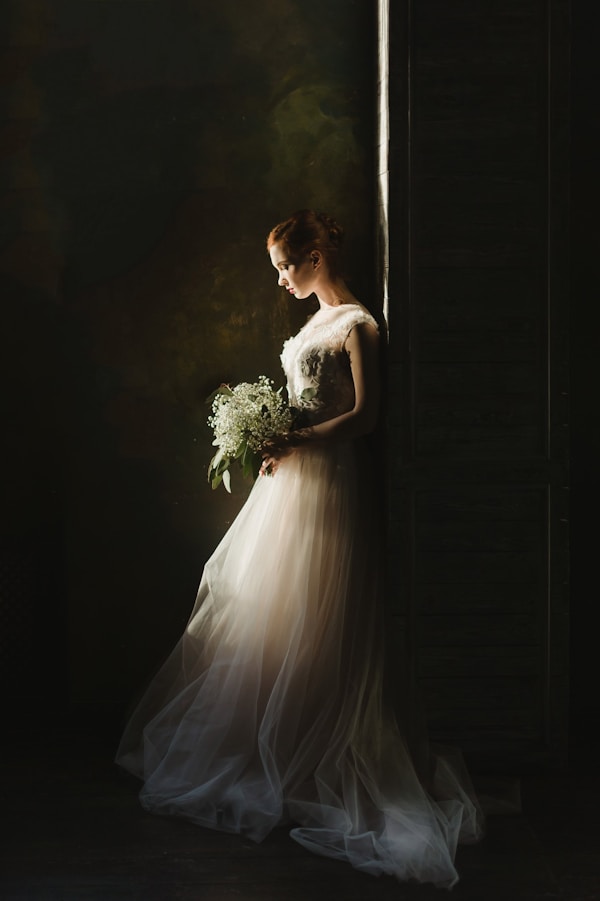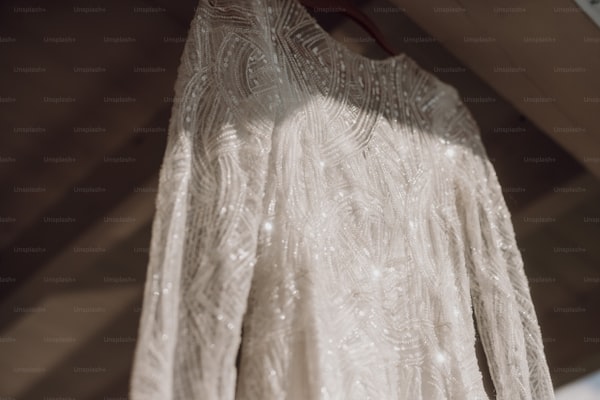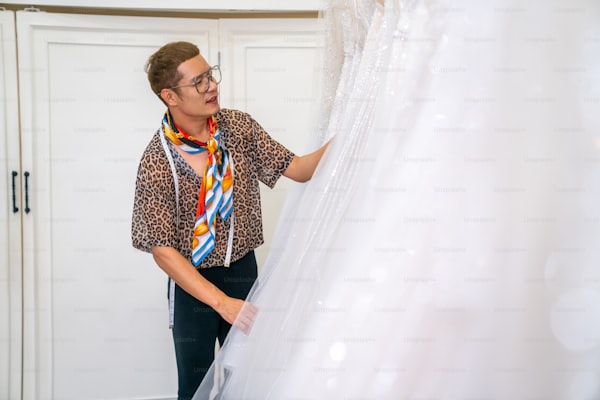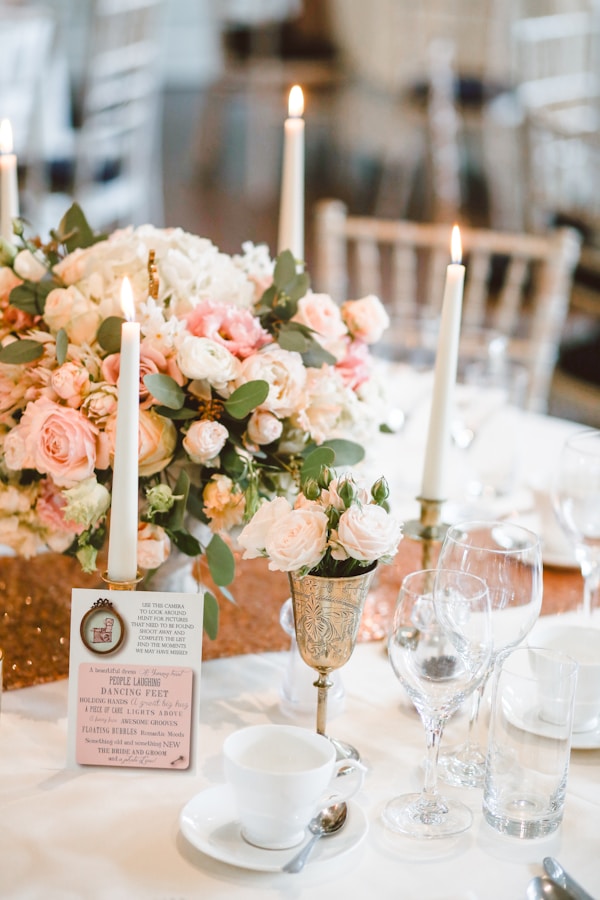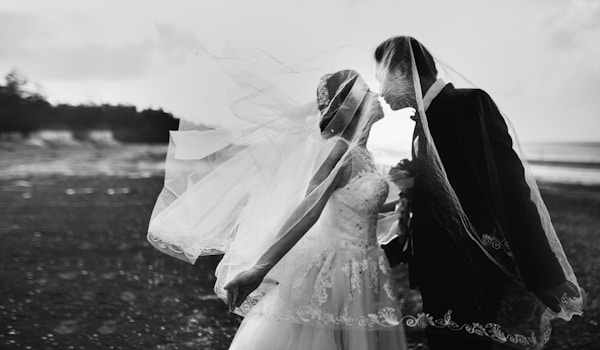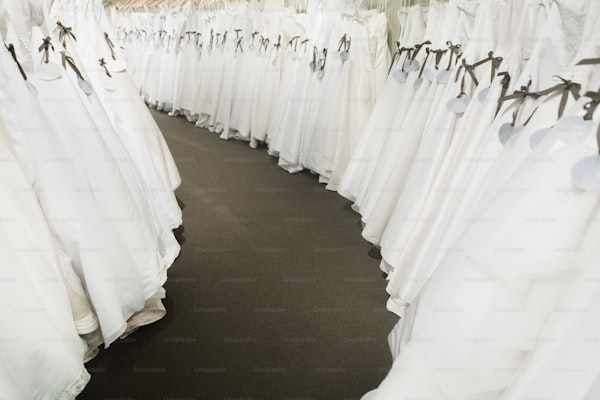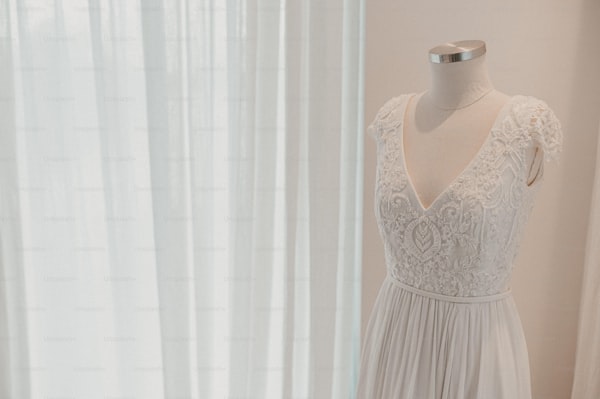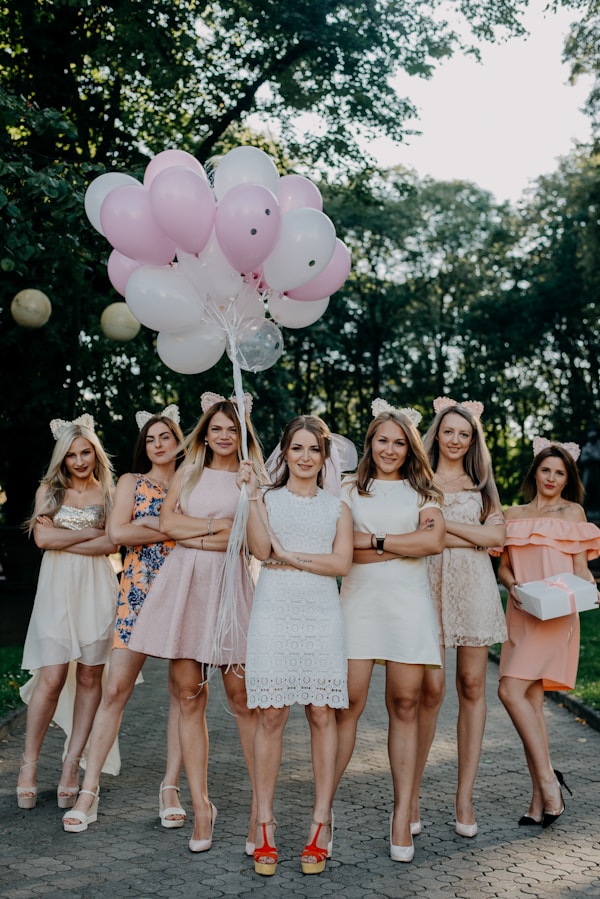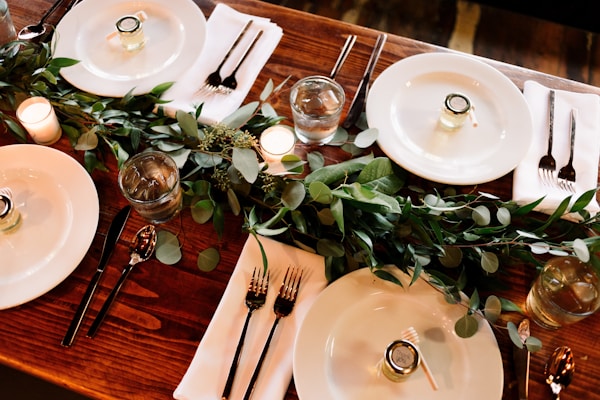Unlocking Elegance: What Methods Are Used to Create a Wedding Dress with a Keyhole Neckline?
IntroductionWhen it comes to wedding attire, few elements are as enchanting as a wedding dress with a keyhole neckline. This design not only exudes elegance but also adds a touch of modernity to traditional bridal wear. In this article, we will delve into the various methods used to create this stunning neckline, exploring its history, the materials involved, and the craftsmanship that goes into making a wedding dress that stands out on the big day.Understanding the Keyhole NecklineThe keyhole neckline is characterized by a cut-out section at the center of the neckline, resembling the shape of a keyhole. This unique design adds a sensual yet sophisticated element to bridal dresses. The popularity of this neckline has surged in recent years, making it a favored choice for brides seeking a combination of timelessness and contemporary flair.The History of the Keyhole NecklineThe keyhole neckline isn’t a completely modern invention; it has roots in both historical fashion and contemporary design. The style gained prominence in the mid-20th century and has since evolved through various fashion trends. Today, it is embraced by bridal designers around the world, symbolizing a blend of romance and innovation.Methods for Creating a Wedding Dress with a Keyhole NecklineCrafting a wedding dress with a keyhole neckline involves multiple techniques and meticulous attention to detail. Below are the primary methods used by designers:MethodDescription1. Pattern MakingDesigners create a uniqu...
Mastering Wedding Dress Alterations: A Comprehensive Guide for Embroidered Hems
How Do You Handle Alterations for a Wedding Dress with an Embroidered Hem?Weddings are special occasions filled with love, joy, and unforgettable moments. One of the most crucial elements of a bride's wedding day is her dress. A beautifully designed wedding dress with an embroidered hem can create a stunning visual impact, but ensuring it fits perfectly is essential. Alterations are often necessary to achieve the desired fit, especially with intricate embroidery. In this article, we will explore how to handle alterations for a wedding dress with an embroidered hem, along with some tips and tricks to ensure a seamless process.Understanding the Importance of Dress AlterationsThe journey of finding the perfect wedding dress begins with understanding that most dresses require some degree of alterations. A well-fitted dress not only enhances the bride’s shape but also allows for ease of movement throughout the day. Failing to address proper fit can lead to discomfort and distraction from the day’s joy.Why is Alteration Necessary?The majority of bridal gowns are made to standard sizes, which might not fit every bride perfectly. Alterations ensure that the dress complements the bride's body shape, height, and personal style. Here are a few reasons why alterations are crucial:Enhances Comfort: A well-fitted dress allows the bride to move freely.Improves Appearance: Tailoring a dress can accentuate the bride’s best features.Accommodates Embroidery: Adjustments ensure that the embroide...
Mastering the Art of Wedding Dress Design: Best Practices for an Empire Waist and Flowing Skirt
IntroductionThe essence of a wedding dress lays in its ability to capture the beauty and elegance of the bride on her special day. Among the myriad of styles available, the empire waist design paired with a flowing skirt stands out as a timeless choice. In this article, we will explore what constitutes the best practices for creating a wedding dress with an empire waist and flowing skirt, ensuring that every bride feels both comfortable and stunning as she walks down the aisle.The Allure of the Empire Waist DesignThe empire waist style is characterized by a raised waistline that sits just below the bust, from which the skirt flows down. This silhouette not only elongates the figure but also provides a flattering outline for various body types. When considering the design, it’s essential to recognize its versatility. Whether the bride envisions a bohemian gown or a classic fairy tale dress, the empire waist can be adapted to compliment her unique style.1. Understanding Body TypesOne of the foundational elements of creating a wedding dress with an empire waist is understanding the diverse body shapes of brides. The right design should celebrate each woman's natural beauty.Body TypeEmpire Waist BenefitsAppleAccentuates the bust while flowing over the midsection, creating an elongated silhouette.PearBalances wider hips with a fitted bodice and flowing skirt, enhancing the waistline.HourglassEnhances natural curves without clinging, providing a relaxed and sophisticated look.Recta...
Unveiling the Magic: Techniques to Create a Wedding Dress with a Detachable Belt
Weddings are a beautiful celebration of love, and every bride desires to look stunning on her special day. One of the key elements that can elevate a wedding dress is a detachable belt. This accessory not only enhances the gown's design but also offers versatility for different looks throughout the day. In this article, we will explore the various techniques used to create wedding dresses with detachable belts, along with trends, styling tips, and maintenance advice. The Allure of Detachable Belts The trend of detachable belts in wedding dresses has gained immense popularity. They allow brides to personalize their gowns, making them unique and suited to individual styles. Whether a bride prefers a classic, bohemian, or modern look, a detachable belt can provide that extra flair. Here, we’ll delve into the different techniques used in designing a wedding dress with a detachable belt. 1. Fabric Selection Choosing the right fabric is crucial in the creation of a wedding dress. Materials such as satin, tulle, lace, and organza are often used for their elegance and structure. A detachable belt typically uses the same fabric as the dress to create a harmonious look or a contrasting material for added interest. Designers often choose lightweight fabrics for belts to ensure they don’t add bulk. 2. Structured Versus Soft Belts Two primary techniques emerge when designing belts for wedding dresses: structured and soft. Structured belts, often made with layers of fabric or even ...
Exploring Methods to Create a Stunning Wedding Dress with a Double-Layer Skirt
What Methods Are Used to Create a Wedding Dress with a Double-Layer Skirt?When it comes to designing the perfect wedding dress, one of the most captivating styles is the double-layer skirt. This design not only adds depth and elegance to the wedding attire but also allows for versatility in fabric choice and silhouette. In this article, we will delve into the various methods used to create a wedding dress featuring a double-layer skirt, exploring the techniques, materials, and design processes involved.Understanding the Double-Layer Skirt DesignA double-layer skirt in a wedding dress typically consists of two distinct layers of fabric that can vary in texture, color, or transparency. This design approach enhances the gown's visual appeal and provides an opportunity for creative expression. The top layer is often made from lighter fabrics, while the underlayer can include heavier materials, thus creating a stunning contrast that catches the eye.Materials Commonly UsedChoosing the right materials is crucial when creating a wedding dress with a double-layer skirt. The choice of fabric will affect the gown's overall look, feel, and flow. Here are some popular materials: Chiffon: Lightweight and flowing, chiffon is perfect for the top layer. Tulle: Often used for a dramatic effect, tulle adds volume and can be layered for texture. Satin: A heavier fabric that adds structure to the skirt. Lace: Commonly used for the top layer to create a romantic look. Fabric...
Mastering Alterations for Wedding Dresses with Asymmetric Necklines
How to Handle Alterations for a Wedding Dress with an Asymmetric NecklineChoosing the perfect wedding dress is a pivotal moment for any bride, and the design details can make all the difference. One particularly striking design feature is the asymmetric neckline. While it certainly adds an element of uniqueness and style, it also raises a number of questions regarding alterations. So, how do you handle alterations for a wedding dress with an asymmetric neckline? This article aims to guide you through the process, ensuring that your wedding dress fits perfectly on your big day.Understanding Asymmetric NecklinesAn asymmetric neckline refers to a design where one side of the neckline is higher or lower than the other, creating a visually dynamic effect. This style is increasingly popular among modern brides who are looking for something out of the ordinary. However, because of its unique shape, alterations require a bit more finesse compared to traditional necklines.Common Reasons for AlterationsLike any dress, a wedding gown with an asymmetric neckline may need to undergo alterations for a number of reasons: Size Adjustment: A dress may need to be taken in or let out for a perfect fit. Length Adjustment: Ensuring that the dress falls to the right length, considering various heel heights. Neckline Adjustment: Making the neckline more or less asymmetric based on personal preference. Comfort Level: Adjusting straps or underlay for added comfort.Steps for Altering an As...
Unlocking the Secrets: Steps for Creating a Wedding Dress with a Subtle Shimmer Effect
Creating the Perfect Wedding Dress with a Subtle ShimmerWedding dresses are an embodiment of elegance and grace, and every bride desires to have a unique gown that shines on her special day. For those looking to add a touch of magic, learning about the steps for creating a wedding dress with a subtle shimmer effect is essential. This article will guide you through the process while answering common questions that brides-to-be might have.Why Choose a Shimmer Effect?A wedding dress with a shimmer effect can capture the light beautifully, making the bride stand out. It adds an extra layer of dimension while still maintaining a level of sophistication. Here are some reasons why you might want to consider this style: Timeless Appeal: A subtle shimmer never goes out of fashion and can complement any bridal style, from classic to modern. Photogenic: Under the right lighting, shimmering fabrics can create stunning visuals in photographs, capturing the essence of your special day. Versatile Design: The shimmer can be incorporated into various styles, including A-line, ballgown, and mermaid silhouettes.Steps to Create a Wedding Dress with a Subtle Shimmer EffectStepDescription1Choose Your Fabric2Select the Shimmer Technique3Design Your Dress4Prepare the Materials5Sew the Dress Together6Add Finishing TouchesStep 1: Choose Your FabricThe first step in creating a wedding dress with a shimmer effect is selecting the right fabric. Some popular options include: Silk: A luxurious ...
Effective Strategies to Manage Production Quality for Custom Wedding Dresses
The wedding industry is booming, and with it, the demand for custom wedding dresses is on the rise. An exquisite custom wedding dress is not just a garment; it’s a dream brought to life. However, ensuring high production quality is crucial to meet the expectations of brides-to-be. In this article, we’ll explore various strategies to manage production quality effectively for custom wedding dresses.Understanding Production Quality in Custom Wedding Dress MakingProduction quality encompasses every aspect of creating a wedding dress, from selecting the fabric to the final fitting. Managing it effectively involves a deep understanding of design, materials, craftsmanship, and the specific needs of each bride. Here are some important elements that contribute to production quality: Fabric Quality: The choice of fabric plays a crucial role in the overall look and feel of the dress. Workmanship: Skilled seamstresses must ensure that stitches are secure and seams align perfectly. Design Consistency: Following the original design precisely is essential to maintain the client’s vision. Proper Fittings: Conducting multiple fittings to ensure the dress fits perfectly before the final delivery.Table: Key Factors Affecting Production Quality FactorDescription Fabric SelectionChoosing high-quality fabrics that match the design vision and ensure durability. CraftsmanshipEmploying experienced professionals to handle sewing and detailing. Design AccuracyStaying true to the...
Innovative Techniques for Designing a Wedding Dress with Unique Sleeve Cuts
IntroductionWhen it comes to creating a wedding dress, every bride dreams of a look that is not only beautiful but also unique. One of the most significant elements that can make a wedding dress stand out is its sleeve design. In recent years, fashion designers have employed various techniques to craft exquisite sleeves that reflect individual style and personality. This article delves into the innovative techniques used to create wedding dresses with unique sleeve cuts, ensuring every bride feels special on her big day.Understanding the Importance of Sleeve DesignThe sleeves of a wedding dress can dramatically influence its overall silhouette and aesthetic. They serve as an extension of the gown, reflecting the bride's personal style, and can create a sense of elegance, drama, or modernity. Many brides may wonder, "What techniques are used to create a wedding dress with a unique sleeve cut?" The answer lies in the combination of traditional craftsmanship and modern innovation.Traditional Techniques in Sleeve DesignMany bridal designers still rely on classical techniques that have been perfected over decades. These traditional methods include:Pattern Drafting: The first step in designing a wedding dress sleeve is drafting the pattern. This involves measuring the bride and creating a template that will dictate the sleeve's shape. The skill in drafting the perfect pattern can determine the final look of the dress.Hand Embroidery: Adding intricate hand-stitched details can eleva...
Unveiling the Secrets: What Methods are Used to Create a Wedding Dress with an Eye-Catching Back Design?
Planning a wedding is a whirlwind of excitement and emotions, and one of the most significant decisions for brides-to-be is choosing the perfect wedding dress. While many elements factor into this choice, the back design of a wedding dress has become increasingly important in recent years. A stunning back can elevate a simple gown to something truly unforgettable. In this article, we will explore the various methods used to create mesmerizing back designs in wedding dresses, ensuring you stand out on your special day.The Importance of a Captivating Back DesignIn the realm of wedding fashion, a wedding dress is more than just a garment; it is a reflection of the bride’s personality and style. The back of the dress plays a vital role, especially since many wedding ceremonies feature elements like a grand entrance and a dramatic turn. A captivating back design adds interest and can be a focal point in photographs. To understand how designers achieve such stunning back designs, we'll explore various methods and techniques.1. Fabric Choices and LayeringThe choice of fabric can dramatically influence the look and feel of a wedding dress, particularly the back. Designers often opt for delicate fabrics like lace, tulle, or chiffon, which can create an ethereal look. Here are some common fabrics used:Fabric TypeDescriptionLaceProvides texture and intricate details, ideal for vintage styles.TulleA lightweight and airy fabric, perfect for creating volume.ChiffonGives a soft drape and ro...
Mastering Wedding Dress Alterations: Navigating Scalloped Lace Edges
Introduction: The Intricacies of Wedding Dress AlterationsWeddings are one of the most significant events in an individual's life, and every detail matters, especially the bridal dress. When it comes to wedding dress alterations, especially with elements like a scalloped lace edge, precision and care are paramount. This article will guide you through the process of handling alterations for a wedding dress featuring scalloped lace edges, ensuring the dress fits perfectly while maintaining its delicate beauty. We'll also explore common questions regarding lace alterations, tips for finding the right tailor, and how to preserve the intricate details of your gown.Understanding Scalloped Lace EdgesScalloped lace edges add a romantic touch to wedding dresses, enhancing their beauty and elegance. However, they can pose challenges during alterations. Scalloped edges can vary widely in design and texture. Understanding the type of lace and its construction is essential to determine the best alteration methods. Types of Lace: Familiarize yourself with popular lace types like Chantilly, Alençon, and Venice lace. Each lace carries unique characteristics that affect how they can be altered. Scalloped Design: Scalloped edges can either be part of the dress material or an overlay. Understanding how your lace interacts with the fabric beneath is crucial for proper alterations.Common Alteration Needs for Wedding DressesWhen considering alterations for your wedding dress, there are several f...
Mastering the Art of Wedding Dress Design: Best Practices for Creating a Dress with Built-in Crinoline
IntroductionChoosing the perfect wedding dress is a significant moment in any bride's life. A wedding dress that not only reflects personal style but also incorporates practical elements—like built-in crinoline—can elevate the overall look and comfort on the big day. In this article, we will explore the best practices for creating a wedding dress with a built-in crinoline, ensuring that brides not only feel beautiful but also comfortable and confident as they walk down the aisle.Understanding CrinolineCrinoline is a stiff fabric traditionally made of horsehair or cotton, used to provide volume and structure to skirts and dresses. In modern designs, crinoline can be sewn into the gown itself, offering a seamless way to achieve fullness without needing a separate petticoat. This section will delve into the importance of crinoline, its benefits, and the styles that best suit it.Benefits of Built-in Crinoline Enhanced Volume: Built-in crinoline adds structure and body to the skirt, ensuring it maintains its shape throughout the event. Convenience: Brides do not have to worry about rearranging or adjusting separate petticoats during the ceremony. Comfort: When appropriately designed, built-in crinoline can feel more comfortable than a separate petticoat, allowing for ease of movement.Best Practices for Designing a Wedding Dress with Built-in CrinolineCreating a wedding dress with built-in crinoline involves careful planning and knowledge of fabric types, design aesthetics, and ...
Designing the Perfect Wedding Dress for Every Shoe Height
How to Design a Wedding Dress That Accommodates a Variety of Shoe HeightsPlanning a wedding involves countless decisions, but one of the most significant choices couples must make is selecting the perfect wedding dress. An often-overlooked aspect is how the dress should harmonize with the bride's shoe choices. As wedding ceremonies come in an array of styles and preferences, it becomes essential to know how to design a wedding dress that accommodates a variety of shoe heights.The Importance of Shoe Height in Wedding Dress DesignWhen designing a wedding dress, it is crucial to take into account the height of the shoes the bride plans to wear. Shoe heights can vary significantly and can impact the overall bridal silhouette. Here are some variables to consider: Shoe Styles: Flats, low heels, mid heels, and high heels The Wedding Venue: Outdoor settings may affect shoe choices The Season: Summer weddings might favor open-toed shoes, while winter might call for closed stylesUnderstanding the Different Shoe HeightsTo effectively accommodate varying shoe heights, one must first understand the options available:Shoe TypeHeightStyle ExamplesFlats0-1 inchBallet pumps, sandalsLow Heels1-2 inchesWedges, kitten heelsMid Heels2-3 inchesPumps, block heelsHigh Heels3 inches and aboveStilettos, platform heelsUnderstanding these heights is essential in creating a dress that suits various styles and ensures the comfort of the bride throughout her special day.Design Considerations for Differe...
Creating a Stunning Wedding Dress with a Low-Cut Back and Long Train: Techniques and Insights
Introduction to Wedding Dress DesignThe artistry involved in designing a wedding dress is a blend of creativity and technical skill. Wedding dresses with unique features, such as a low-cut back and long train, are especially popular among brides who want to make a statement on their special day. This article delves into the various techniques used to create these stunning garments, highlighting essential tips and considerations for brides-to-be, designers, and fashion enthusiasts alike.Understanding the Allure of a Low-Cut BackA low-cut back wedding dress exudes elegance and sophistication, providing a perfect canvas for showcasing a bride's figure. This design often necessitates careful construction to ensure comfort and support. Below are some techniques used to craft this beautiful style:1. Fabric SelectionThe choice of fabric is critical in achieving a low-cut back. Lightweight materials, such as chiffon, silk, and lace, are popular for their draping qualities. Each fabric contributes to the overall flow and structure of the dress:Fabric TypeCharacteristicsCommon UsesSilkLuxurious, smooth, and lightweightGowns with flowing silhouettesLaceIntricate patterns and texturesOverlay on fitted bodicesChiffonSheer, flowy, and breathableTraining details and overlays2. Corsetry and Support StructuresA low-cut back requires additional structural support to ensure the dress fits comfortably. This is often achieved through corsetry that helps shape the bodice while providing stability....
Managing Wedding Dress Production with Bespoke Fabric Prints: A Comprehensive Guide
Introduction to Bespoke Wedding Dress ProductionEvery couple dreams of their perfect wedding day, and one of the most significant aspects of that vision is the wedding dress. When it comes to wedding gowns, many brides opt for bespoke designs that reflect their personal style and preferences. A critical part of this customization process is the use of bespoke fabric prints. But how do you manage the production of wedding dresses with bespoke fabric prints? In this article, we will delve into the intricacies of managing this unique production process, addressing common questions, challenges, and recommendations.Understanding Bespoke Fabric PrintsBefore diving into the production management, it’s essential to grasp what bespoke fabric prints are. These prints are custom-designed patterns and colors that can be applied to fabrics specifically intended for a wedding dress. The ability to create unique prints adds a personal touch and enhances the overall aesthetic of the gown. Here are three reasons why bespoke fabric prints are becoming increasingly popular: Personalization: Every bride wants to feel unique on her special day. Custom prints allow for the creation of one-of-a-kind designs. Quality Control: Working with bespoke fabrics often means selecting higher quality materials, offering brides better durability and comfort. Innovative Designs: Designers can experiment with colors and patterns that fit the wedding theme or the bride’s personality.The Production Proces...
Unveiling the Elegance: What Methods Are Used to Create a Wedding Dress with a Waterfall Hemline?
Choosing the perfect wedding dress is often a bride's top priority as she plans her special day. Among various styles, the waterfall hemline has gained immense popularity due to its unique and graceful aesthetic that adds a touch of drama and elegance to any wedding ensemble. In this article, we will explore the intricate methods used to create a wedding dress with a waterfall hemline, ensuring that brides-to-be understand the craftsmanship and creativity behind this beautiful design.Understanding the Waterfall HemlineThe waterfall hemline is characterized by its cascading layers that create a flowing, soft silhouette. This style can vary from subtle drapes to dramatic layers that sweep the floor, and it is ideal for both traditional and contemporary weddings. The allure of the waterfall hemline lies not just in its visual impact but also in the craftsmanship involved in its creation. Let's delve into the different methods used to craft these stunning dresses.1. Fabric SelectionOne of the foundational elements in creating a wedding dress with a waterfall hemline is the choice of fabric. Natural fabrics such as silk, chiffon, and tulle are commonly used due to their lightweight and airy characteristics that allow for beautiful draping. For instance, silk can create a luxurious look, while tulle adds a whimsical touch. Understanding the properties of each fabric can help designers create the desired effect for the waterfall hemline.Fabric TypeCharacteristicsIdeal UseSilkSoft, l...
Crafting the Perfect Wedding Dress: Steps for Creating a Gown with Delicate, Hand-Sewn Details
IntroductionWeddings are one of the most significant events in a person's life, and choosing the right wedding dress is an overwhelming yet exciting task. Among the options available, a wedding dress with delicate, hand-sewn details stands out for its elegance and uniqueness. But what are the steps for creating a wedding dress with such intricate features? In this article, we will explore each step in detail, offering you valuable insights and practical tips.Understanding the Art of Wedding Dress DesignBefore diving into the creation process, it's essential to understand the underlying art of wedding dress design. Designers often pull inspiration from various sources, including fashion trends, historical designs, and personal experiences. They consider several factors to ensure the dress fits perfectly within the wedding's theme and the bride's personal style.1. Conceptualization: Finding Your InspirationThe first step in creating a wedding dress is to find your inspiration. This could be through: Browsing bridal magazines Pinterest boards Fashion shows Nature and art referencesCollect images, fabrics, and color palettes that resonate with your vision. Once you have a clear direction, sketch your ideas or work with a designer who can help bring your vision to life.2. Fabric Selection: The Foundation of Your DressChoosing the right fabric is crucial, especially for a dress that features delicate, hand-sewn details. Luxurious and lightweight fabrics like silk, chiffon, and ...
Creating a Stunning Wedding Dress with a Dramatic Neckline Ruffle
What Techniques Are Used to Create a Wedding Dress with a Dramatic Neckline Ruffle?A wedding dress is not just a garment; it's a piece of art that encapsulates the spirit of the special day. Among the many elements that can elevate a wedding dress, the neckline is one of the most significant. The dramatic neckline ruffle adds a touch of elegance and boldness, making the bride stand out on her big day. In this article, we will explore the various techniques used to create wedding dresses with dramatic neckline ruffles, diving deep into design inspiration, fabric selection, construction methods, and care tips.1. Understanding the Importance of a Dramatic Neckline RuffleNeckline ruffles serve not only an aesthetic purpose but also play a crucial role in framing the face and enhancing overall beauty. They can vary from subtle to dramatic, depending on how they are designed and executed. Here, we will outline some engaging aspects related to the dramatic neckline ruffle: Enhances Facial Features: A well-constructed ruffle can draw attention to the bride's face, accentuating her features. Creates a Statement: A dramatic ruffle adds a sense of boldness, allowing the bride to express her style and personality. Adds Overall Volume: Ruffles can add volume to an otherwise simple design, making the dress visually more appealing.2. Techniques for Creating a Dramatic Neckline RuffleWhen it comes to crafting a wedding dress with a dramatic neckline ruffle, various techniques can be...
Mastering the Art of Alterations for Wedding Dresses with an Open-Back Design
Understanding Alterations for Open-Back Wedding DressesWhen it comes to bridal fashion, wedding dresses with open-back designs have garnered significant popularity. They exemplify elegance, romance, and modernity. However, these stunning designs often necessitate careful handling during alterations to ensure a perfect fit. In this article, we will explore how to effectively manage alterations for a wedding dress with an open-back design, ensuring that every bride can feel like a true vision on her special day.What Are Open-Back Wedding Dresses?Open-back wedding dresses are characterized by their unique design, which features a partially or fully exposed back. Such designs can range from subtle dips to daring, low-cut backs. They can be made from various fabrics, including lace, satin, and chiffon, providing brides with numerous styling options.Many brides choose open-back dresses to showcase their personal style and create a stunning visual impact. However, the nature of this design means that alterations must consider various factors to achieve a flattering and comfortable fit.Considerations for AlterationsBefore embarking on the alteration process, it's essential to take specific factors into account:1. The Fabric TypeThe fabric of the wedding dress significantly influences the alteration process. Delicate fabrics like lace or chiffon may require specialized skills, while sturdier fabrics like satin can be more straightforward to work with.2. The Dress StructureOpen-back dr...
What Are the Best Practices for Creating a Wedding Dress with an Embellished Waistband?
Understanding the Charm of Embellished Waistbands in Wedding DressesWhen it comes to designing the perfect wedding dress, every detail matters. One of the most striking features that can elevate the elegance of a wedding gown is the waistband, especially when it is embellished. Not only does it enhance the silhouette, but it also adds a personalized touch that reflects the bride’s style. In this article, we will explore the best practices for creating a wedding dress with an embellished waistband. From fabric choices to embellishment techniques, we will cover everything you need to know.The Importance of the WaistbandThe waistband is a crucial element that defines the waistline, accentuates the figure, and serves as a focal point for creativity. A well-designed waistband can turn a simple gown into a stunning statement piece. Brides often look for designs that offer both comfort and style. The following are some best practices when incorporating an embellished waistband into a wedding dress:1. Choose the Right FabricThe choice of fabric is foundational in sewing a wedding dress. It can significantly impact the look and feel of the embellished waistband. Here are some fabrics to consider:Fabric TypeDescriptionSatinSmooth and luxurious, it provides a beautiful drape.TulleLightweight and airy, perfect for layering over decorations.ChiffonSoft and flowing, great for creating a romantic look.OrganzaStiffer than tulle, ideal for structured designs.Each of these fabrics has its own ...
